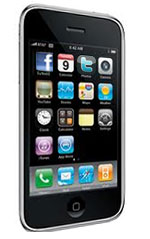
Research released last week suggests that people who suffer from nickel and cobalt allergies may need to be careful when selecting a cell phone. A bank of mobile devices researched in a study led by a Stony Brook University Associate Professor revealed that some expose cobalt, nickel, or even both.
Cobalt and nickel are two sources of allergies in people that can cause swelling, itching, and blistering where exposed. Numerous case reports have since linked cell phones to nickel allergy, which affects an estimated 17% of women and 3% of men. Dermal issues associated with the allergy are more commonly triggered by wearing jewelry.
See below what phones contained cobalt and/or nickel during testing:
No nickel or cobalt detected
|
Contained nickel but no cobalt
|
Contained both nickel and cobalt
|
About 10 years ago, allergists and dermatologists began to notice skin issues around patients’ jaw lines, ears, and cheekbones. The doctors soon deduced the cause was positively correlated with certain mobile phone usage, as the symptoms would clear up once the patient switched or stopped using a certain device.
The recent study set out to gain specifics for some of the most popular cell phones.
Researchers tested new and used cell phones, ranging from older-style “flip phones” to an iPhone 4S and BlackBerry Torch. In all, 72 devices were tested, spanning five brands and 16 models. Each specimen was swabbed on its exterior with a nickel-detecting solution in at least five locations.
And although every mobile phone contains a handful of metals inside its electronics, the study shows that many of the flip phones tested had both metals exposed and some of the BlackBerry models tested positive for nickel presence.
 On the contrary, there’s good news for Apple fans: neither nickel nor cobalt were detected on the surfaces of any iPhone in the study.
On the contrary, there’s good news for Apple fans: neither nickel nor cobalt were detected on the surfaces of any iPhone in the study.
The reason for variance is based on design—namely, in the face of the phone.
“In those phones that looked like the keypad had a lot of wear and tear, they were more likely to test positive for nickel,” says lead researcher Luz Fonacier, Head of sponsoring Winthrop University Hospital Division of Rheumatology & Immunology’s Allergy Section and Associate Professor of Clinical Medicine at Stony Brook University.
“In the BlackBerry phones, the nickel was found mostly on the keypads,” Dr. Fonacier adds.
For now, there are no restrictions or constraints set forth that limit surface presence on mobile phones in the United States. In response, CTIA, The Wireless Association, deferred to scientific experts and RIM, Research in Motion (BlackBerry), said that more research needs to be done.
For now, if you are experiencing trouble with your phone in this regard, it is recommended to consult a medical professional and try switching phones out.
“If you really love your cell phone, use an earpiece or use a cover,” Fonacier says.
In The News:
 |  | |
 |
Cover Photo: SUNY Fashion Institute of Technology, Fall 2012


Cell phone allergies…interesting. I am using iphone 3..so no worries..